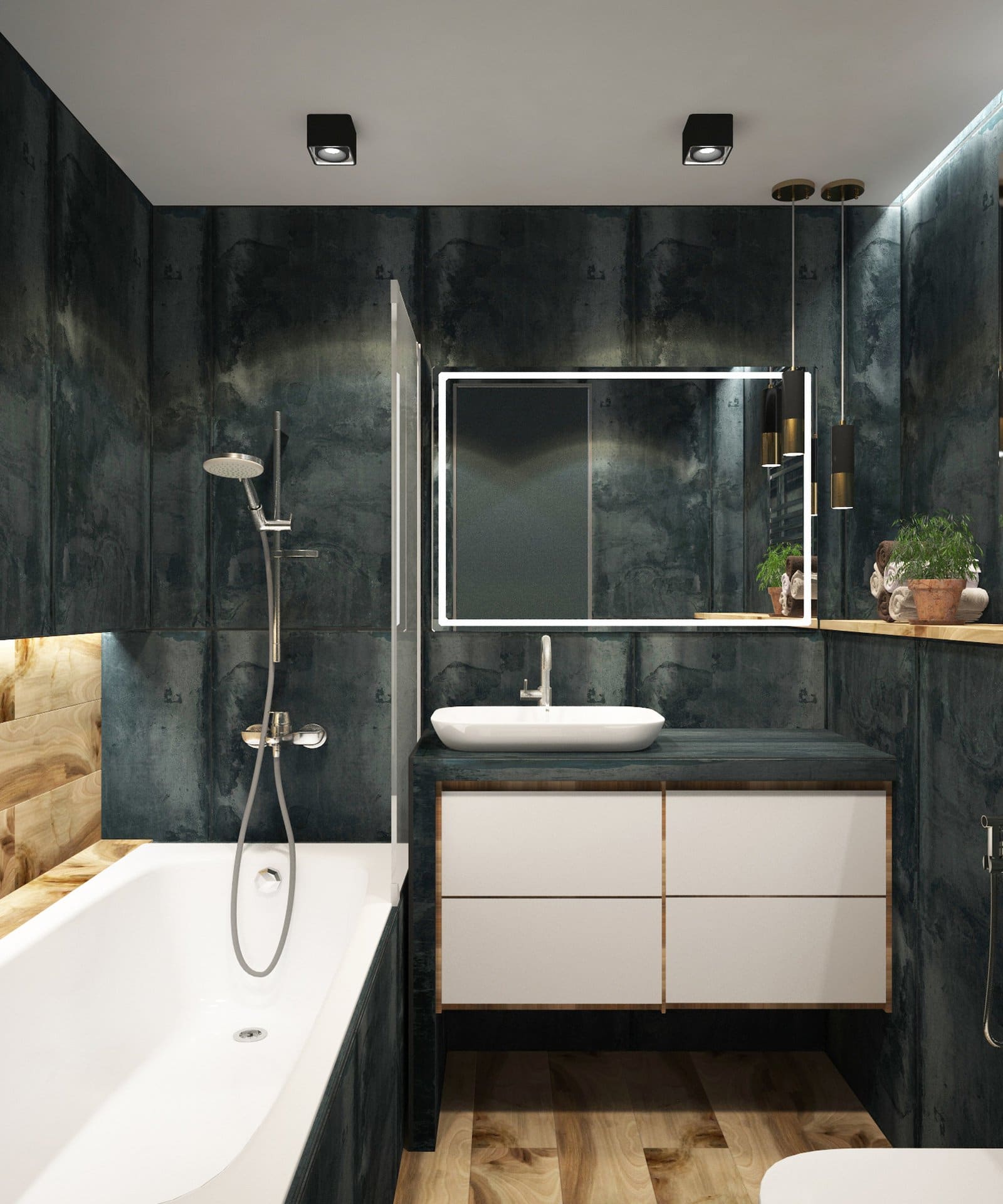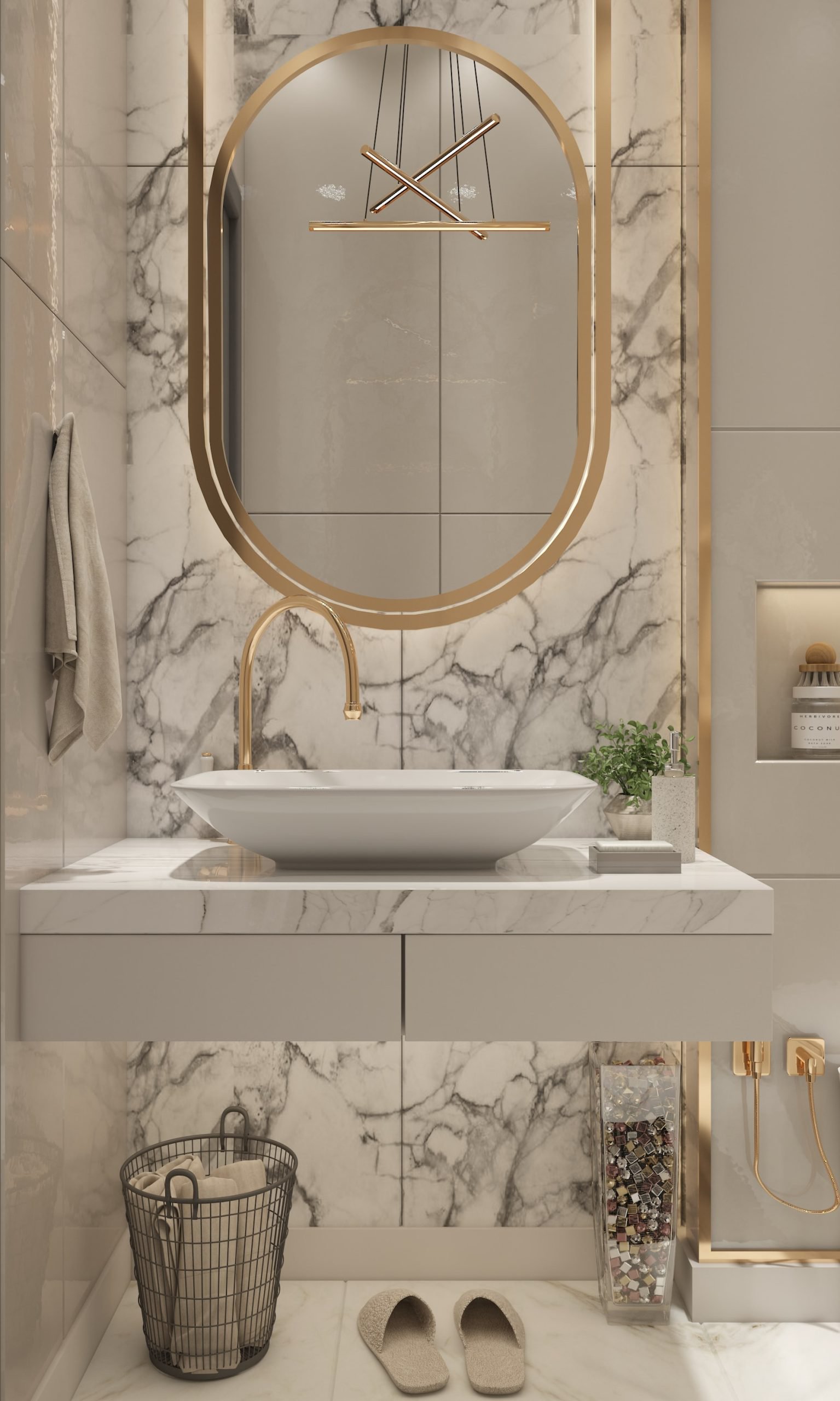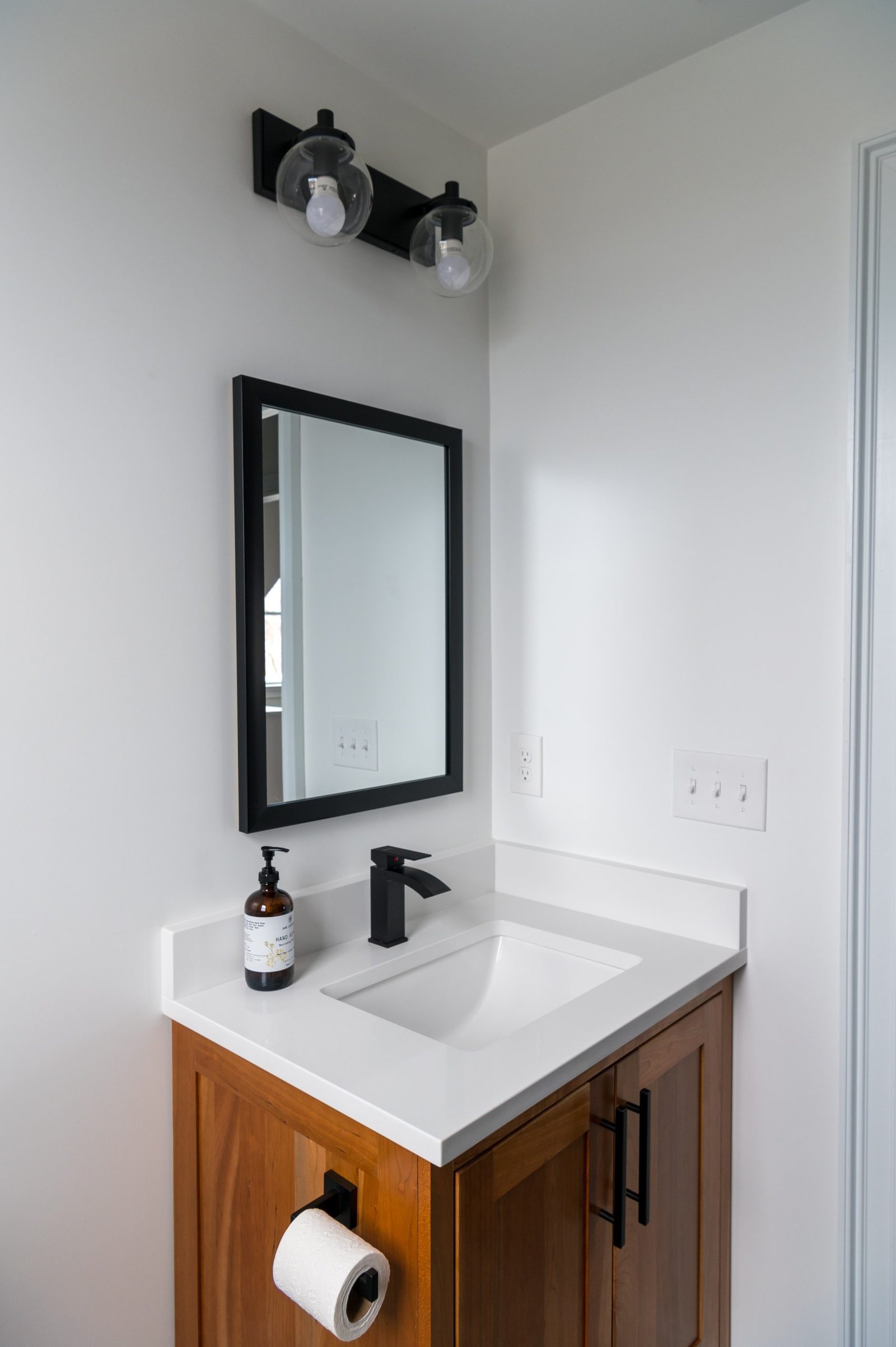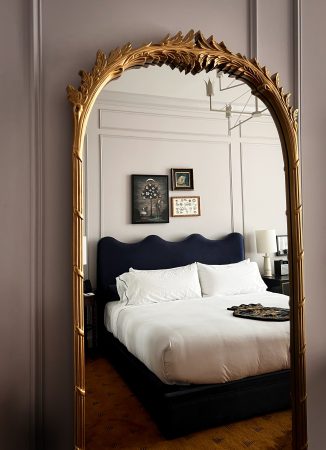What Size Mirror Should You Use for a 48-inch Vanity?
You’ll likely spend more time in front of your bathroom mirror than any other mirror in your house. It’s important, then, that the mirror feels harmonious with the bathroom space. Whether you’re planning on updating your old bathroom mirror, or completely rebuilding your bathroom, here’s what size mirror you should use:
48-inch Vanity Mirror

A 48-inch vanity is probably a single one, meaning you likely will only have one sink and therefore only need one mirror! While it is possible to have two sinks with this vanity size, most people who share bathrooms prioritize extra counter space and single wider mirrors over two sinks.
Width
Your vanity should be the main focus of your bathroom, taking visual priority over the mirror. This means that, for a 48-inch vanity, the mirror should be a couple of inches shorter, about 46-47 inches. This leaves a half an inch to one-inch gap around the sides of the mirror.
The general rule of thumb is to make the mirror 1-2 inches narrower than the vanity. This width will vary according to different factors, but the mirror should never be bigger than the vanity.
Height
The height of your mirror doesn’t really have a strict rule, because it entirely depends on who is using the mirror. If you’re sharing the bathroom with your adult partner, you should ensure that the face of each of you is not cut off by the top or bottom of the mirror.
If that bathroom is for children, you might want to hang your mirror a bit lower, but if everyone in the family shares the same bathroom you might need to opt for a long mirror that ensures everyone can use it.
A bathroom mirror is on average, 30-36 inches tall, so you’ll have some room to play with, according to what you need!
Factors to Consider
Of course, the rules can’t and shouldn’t always be followed! Sometimes it’s impossible to do so, sometimes a deviation looks better. Let’s look into some factors to consider when choosing your mirror size.
Mirror Shape

What mirror shape are you considering? If you’re going for the classic rectangle, then follow the established measurements — one to two inches shorter than the vanity.
However, if you’re doing something different, maybe a round, oval or octagonal shape, the solution will be slightly different. In this case, it’s common to use the sink as a guideline, as opposed to the vanity. Your mirror should be about the size of your sink or a couple of inches wider.
If you choose a fun, novelty mirror, you’ll follow the same logic as with round mirrors. This is because an oversized novelty mirror is likely to pull the focus away from any other elements in your bathroom. So if you want a balanced look, use your sink size as a guideline.
Have in mind that any mirror that isn’t rectangular won’t reach as far down, so it’ll be better for a bathroom only adults regularly use.
Mirror Frame

Another thing to consider is if your mirror is going to have a frame. A frame is an easy and cheaper solution for customizing a bathroom, and there are some other advantages to it.
If you’re choosing a framed mirror, you’ll need to consider its width as the measurements of the mirror plus the frame. This means the mirror will be smaller than previously established.
Bathroom Wall and Vanity

Maybe your bathroom has a wall-to-wall vanity. Fancy! In this case, take advantage of the width you have available and consider wall-to-wall mirrors, as well. These will make your space appear even wider.
This is also a practical solution if you have more than one person using that mirror, or if people of various heights are using that bathroom — a wonderful family option!
Light and Fixtures

A very practical thing you’ll need to consider before getting a new bathroom mirror is the physical lights and fixtures already there.
If you have side sconces on your wall, you’re quite limited. The sconces should be level with your face, 36-40 inches apart and the space between the sconce and mirror edge should be over 1 inch. This means your mirror will be between 35-39 inches, which is several inches shorter than the usual formula for a 48-inch vanity.
Upper sconces can limit your mirror height, too. This type of sconce might be a better option for shorter walls, as it can feel like it cuts off a taller wall.
If you have a plug socket by the side or bottom of your mirror, a similar issue pops up. You’ll need to ensure at least a one-inch difference between the socket and the end of the mirror. You’ll also want to be extra careful and ensure that the mirror is symmetrical. Use the middle of the sink as a guide (usually where the faucet is), making sure it aligns with the center point of the mirror.
Note: If you opt for a smart mirror, a plug socket is an advantage, and will be covered by the mirror for a cleaner look.
Final Words
A bathroom mirror is something you’ll look at every day. You want to get it right. However, there are a lot of variables to consider when choosing a bathroom mirror.
For practical and aesthetic reasons, you usually want your mirror to be as wide as possible without being bigger than the vanity space. But maybe an interesting mirror is exactly what your bathroom is missing! Either way, we hope this guide helped in your decision.
